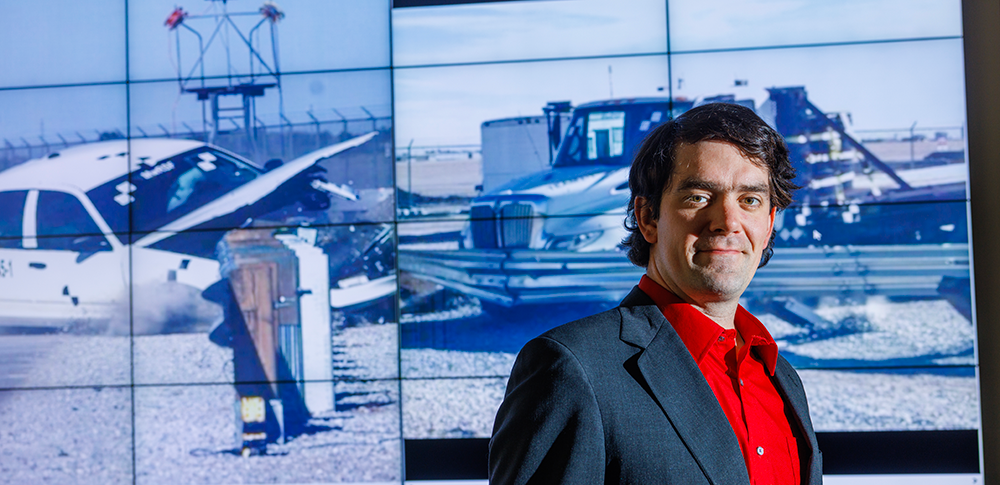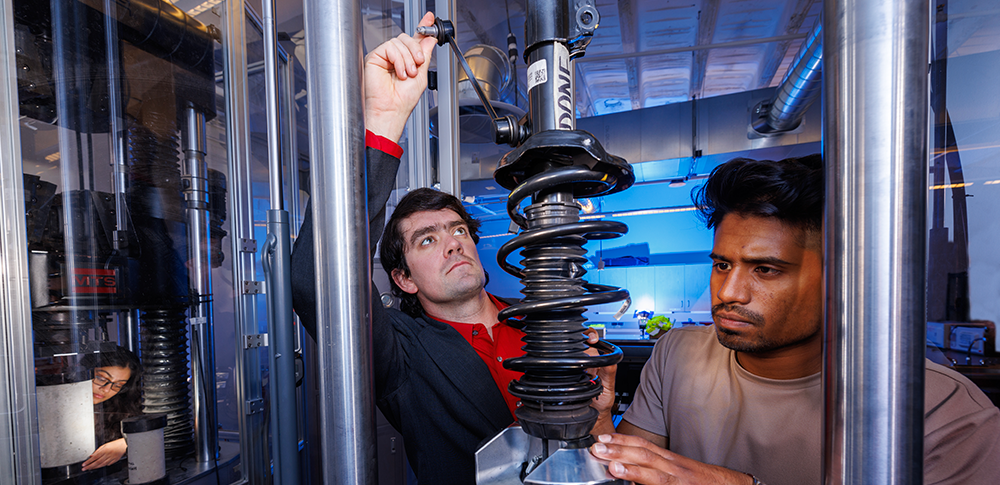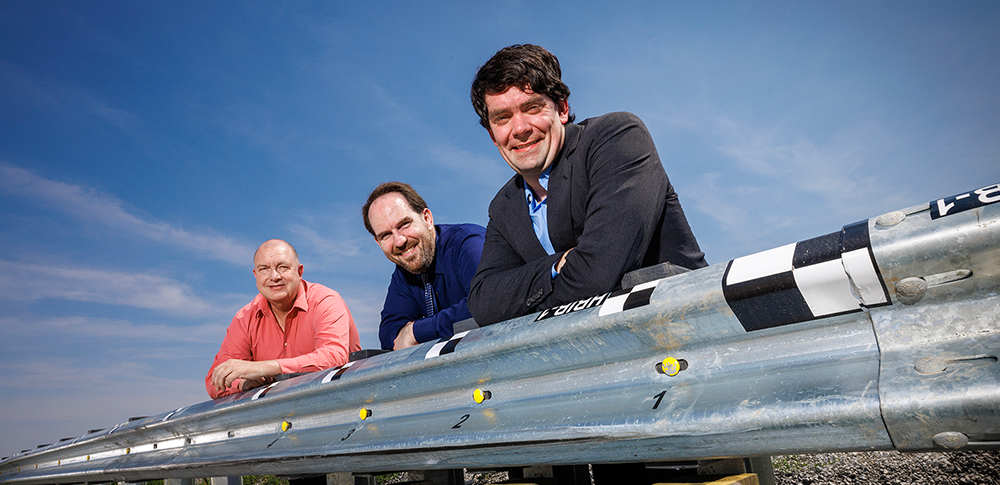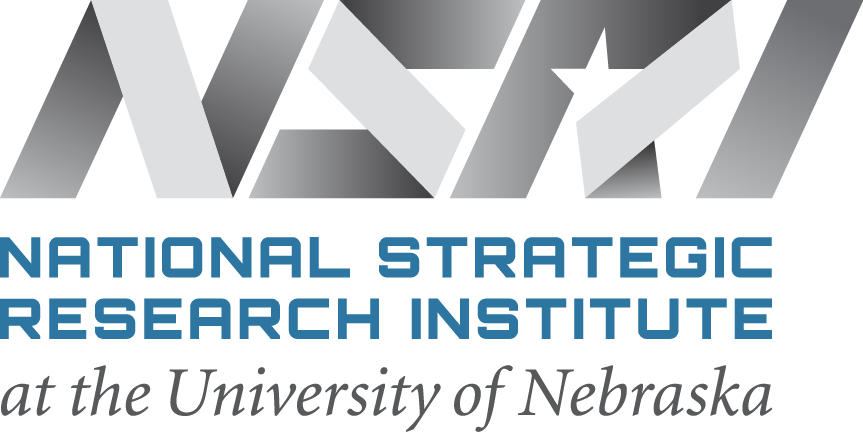
When thinking of life-saving professions, engineering may not come to mind alongside doctors, nurses, firefighters and other emergency personnel. But lifesaving is exactly what inspires engineers like Dr. Cody Stolle.
"Saving lives is the utmost motivation for me," Dr. Stolle said. "I want to leave a legacy of research well done that always pushes the margin of safety forward."
Dr. Stolle is a research assistant professor for mechanical and materials engineering at the University of Nebraska–Lincoln, a Carnegie Research 1 institution and member of the Big Ten Academic Alliance. Among his many projects, Dr. Stolle is adapting technology in roadside safety barriers to create anti-crash barriers for military facilities. U.S. Transportation Command funds the $800,000 project through the National Strategic Research Institute (NSRI) at the University of Nebraska.
Inspired by a family friend to pursue engineering while in high school, Dr. Stolle earned his bachelor’s, master’s and doctoral degrees from UNL and remained to contribute his talents at the UNL Midwest Roadside Safety Facility (MwRSF).
MwRSF holds an American Association for Laboratory Accreditation in safety performance evaluation of highway features and vehicle testing of crash barriers. It is a full-service testing house, offering compliance testing, design, redesign, failure analysis and component testing of roadway and roadside appurtenances.
Researchers at MwRSF use state-of-the-art computer software to simulate real-life impact events. Using computer simulation, it is possible to reduce design costs and better understand system behavior.
"I’d love to get to the point where no one dies on our nation’s roadways — where you can have complete confidence that when you get into a vehicle, you will arrive at your destination," Dr. Stolle said. "That’s what gets me excited about my work every single day."
While the bulk of work at the MwRSF is focused on savings lives by keeping people safe during unintentional crashes, Dr. Stolle’s defense work is designed to protect military installations from someone trying to use a vehicle to forcibly enter or damage the facility. The basic goal to protect people is the same, but there are some philosophical differences in how the researchers approach the work.
"In run-off-road events, you generally are never encountering someone who’s intentionally trying to hit the hardware," he explained. "You’re usually trying to protect someone who doesn’t want to be involved. But with defense work, you have to rethink it. Now you’re not just looking to identify possibilities, but vulnerabilities. How can someone exploit the weaknesses of these systems?"
One of the most difficult challenges of any problem is quantifying the number of unknowns. For defensive applications, and particularly for perpendicular impacts, the number of unknowns is extensive, Dr. Stolle said. Vehicle geometries, impact speeds and angles, soil conditions, weather — it is challenging to design something to be as universal as possible when the unknowns exceed the knowns.
But that universality is exactly the goal. Dr. Stolle intends to design barriers that can work in as many places as possible and be easily accessed when needed.
"We’re trying to develop non-proprietary products that can be sourced locally," he explained. "We’re also trying to save the Department of Defense money by using simplified construction and designs that are consistent with what’s already on roadsides."
Of course, new technologies offer further considerations. Electric vehicles (EVs), for example, are heavier than conventional vehicles and can accelerate faster, potentially allowing them to get up to speed to ram a barrier from positions a conventional vehicle couldn’t.
"Future higher-performance vehicles could challenge threat reactivity and preparedness," Dr. Stolle explained. "For example, if we’ve designed a system to initiate a rollover—well, EVs are highly resistant to rollover. We may not be able to capture all of the benefits of our system."
Fortunately, while the project's challenges are significant, Dr. Stolle and his team are up to the task. And that includes the UNL students who contribute directly to the project deliverables.

"Students are the backbone of everything the facility does," Dr. Stolle said. "They’re the primary workers. Graduate students’ research often correlates with the objectives of military projects, and we can use new software, analysis techniques and so on."
Dr. Ronald Faller, Dr. Stolle’s colleague at the Midwest Roadside Safety Facility, praised Dr. Stolle on his work with students and as a researcher.
"Dr. Stolle is great with mentoring students, encouraging them to set high expectations, seeking high-quality research output and holding them accountable,” Dr. Faller said. “He is also a national leader with great vision, and he is one of the more energetic researchers that I have ever seen. He is always willing to meet with new researchers to identify opportunities to work together."

As for NSRI, Dr. Stolle credits the institute for helping things go smoothly on the administrative side.
"NSRI has always been an extraordinarily useful mechanism for communication with DOD partners," he said. "They have been phenomenal in creating a smooth process and widening the doors of opportunity."
Whether it is at home, on our nation’s highways, or abroad protecting our warfighters, great minds like Dr. Stolle work hard to keep everyone safe. His dream of eliminating deaths on the nation’s roadways may seem lofty, but with his passion and energy, he just might achieve it.
###
About the National Strategic Research Institute
Through the National Strategic Research Institute at the University of Nebraska leading scientists deliver innovative national security research, technology, product and strategy development, training and exercises, and subject matter expertise to the Department of Defense and other federal agencies. One of only 15 DOD-designated University Affiliated Research Centers in the country, NSRI is sponsored by U.S. Strategic Command and works to ensure the United States’ safety and preparedness against increasingly sophisticated threats. Read about our mission.

